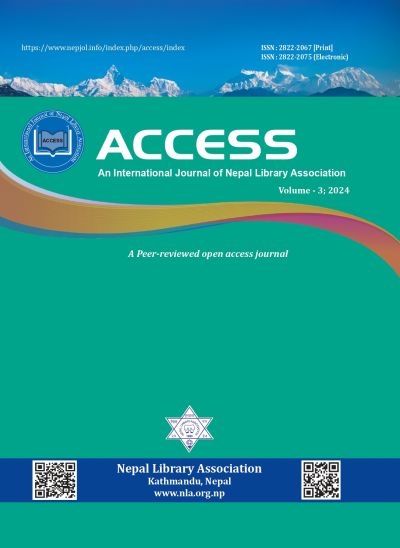Basic Stages of Analyzing Qualitative Documents Using ATLAS.ti
DOI:
https://doi.org/10.3126/access.v3i1.69427Keywords:
ATLAS.ti, ATLAS.ti project, Documents, Quotation, codes, Code group, CAQDAS, Research processesAbstract
ATLAS.ti is widely recognized as a prominent example of computer-aided qualitative data analysis software (CAQDAS), alongside other notable programs such as NVivo, MAXQDA, Dedoose, Quirkos, and QDA Miner. Specifically designed for the analysis of unstructured, non numerical textual documents, ATLAS.ti facilitates comprehensive qualitative research processes. This paper aims to provide a brief demonstration of stepwise thematic analysis using ATLAS.ti X9. The focus is on analyzing three real micro-interview documents that delve into individuals’ food behaviors regarding breakfast, lunch, and dinner. Drawing on direct experience with ATLAS.ti, the study meticulously illustrates three essential stages of thematic content analysis—pre-analysis, material exploration, and interpretation—within the software’s intuitive interface. Moreover, the paper sheds light on activities conducted outside ATLAS.ti, both preceding and following its use, to enrich the analytical process. By offering a practical guide, this demonstration seeks to empower novice qualitative researchers in harnessing ATLAS.ti effectively for their analytical needs, thereby enhancing the rigor and depth of their research outcomes.
Downloads
Downloads
Published
How to Cite
Issue
Section
License

This work is licensed under a Creative Commons Attribution-NonCommercial 4.0 International License.




